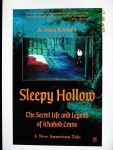Title: The Librarian of Burned Books: a Novel
Author: Brianna Labuskes
Publication Information: New York, NY: William Morrow, an Imprint of
HarperCollins Publishers, 2023. First edition.
ISBN: 978-0-06325-925-6
Library of Congress Classification: PS3612.A279
Library of Congress Subject Headings:
Librarians–Fiction; Censorship–Fiction; Women authors–Fiction; World War,
1939-1945–Fiction.

This is a very engrossing novel. I really liked it.
There’s three stories being told at three different times: Berlin, 1932-1933; Paris, 1936-1937; and New York, 1943-1944. These stories weave in and out of each other throughout the book until they are tied together in the final chapters. The epilogue ends in New York, 1995.
The three protagonists are women: Vivian Childs, an upper class woman who lost her husband in the war; Althea James, a Mainer from Owl’s Head that was invited by Joseph Goebbels to visit Nazi Germany; and Hannah Brecht, a German Jew who is horrified to witness her country descending into intolerant madness.
Viv works for the Armed Services Editions, which is a government program that sends novels to GIs fighting overseas. Senator Robert Taft of Ohio sought to censor what could be sent to the GIs, and Viv makes it her mission to stop him. The real Taft did try and censor the Armed Services Editions and did so to get back at Franklin Roosevelt, whose government started the program. Taft was his own worst enemy. His loose lips brought his empire crashing down around him. The book’s take is much more dramatic–as it should be.
Althea is an extremely naive, sheltered young woman who is thrilled to be in Berlin and thrilled to being shown around the capital by the Nazis. She’s basically the country bumpkin in the big city, and her self-doubt is always there to make her stumble. She serves as a tool for the Nazis. Being of German descent, they tout her as another brilliant Ayran writer. Althea attends their cocktail parties with the officials and their cronies, never being out of her handlers’ clutches. It’s only after she meets Deveraux Charles, a fellow American, who opens Althea’s eyes to the culture that the Nazis seek to destroy. Deveraux takes her to the other side of town, so to speak, and there Althea’s eyes are opened.
Berlin in the 1920s and early 1930s was, well, party city. There was a very active night life in the city, and some of it was queer. That night life mocked the Nazis. Althea meets Hannah and her band of friends through Deveraux, but Dev is not all that she seems. She is an actress, and interacts with the highest party officials as well. Still, it is this interaction with these “undesirables” that Althea witnesses some of the Nazis’ atrocities, such as a massive book burning.
In Paris and in Brooklyn there is a Library of Burned Books—made up of books that the Nazis destroyed. Viv meets the mysterious librarian of the Brooklyn library that she slowly gets to know. There are even copies of books written by Nazis in the library so that people would not forget what the Nazis were trying to do. The librarian seems to be the central character, as indicated by the title. Viv seeks to get her involved with her attempt to save the Armed Services Editions from censorship.
The book well-written and the time traveling throughout was handled brilliantly. I can imagine how hard it is to weave three stories together in a book, and Labuskes makes it look easy.




 Title: We Wish You a Murderous Christmas
Title: We Wish You a Murderous Christmas

 Title: How to be a Normal Person
Title: How to be a Normal Person
